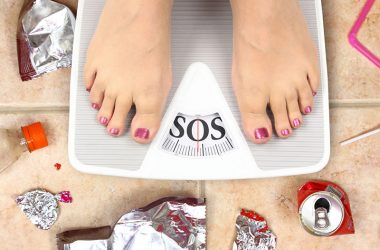Exercise Guidelines: What is right for you?
Here in Part 2 of Healthy Exercise Guidelines, current exercise guidelines for adults as provided by the American College of Sports Medicine (ACSM), are reviewed. ACSM is the nation’s foremost professional society dedicated to the study and advocacy of the benefits of exercise.

In Part 1, the strong scientific evidence demonstrating numerous health benefits of exercise was provided. Again, it should be noted that for the purpose of losing weight, research shows that proper diet plays a much more critical role than exercise.
For general health benefits, the ACSM recommends that adults engage in a program of regular exercise training, beyond the activities of daily living, which includes four different types of exercise. These are:
- Cardiorespiratory Exercise
- Resistance Exercise
- Flexibility Exercise
- Neuromotor, or functional fitness training
For a detailed discussion of the first type, Cardiorespiratory Exercise, go to Healthy Exercise Guidelines: Part 1.
The second type of exercise recommended by the ACSM is resistance exercise. Adults should train two or three days each week using a variety of exercises and equipment. I personally recommend free weights or cables whenever feasible; machines with fixed arcs of motion may not fit your body mechanics properly and can hurt your joints. All major muscle groups should be targeted: chest, shoulders, back, hips, legs, trunk and arms. Exercises that involve multiple muscle groups at the same time are most efficient, but single-joint exercises that isolate functionally important muscle groups such as the abdominals, lower back and calf muscles are also important. I make a special pitch for including the squat in your routine – it is the single most important exercise you can do. This is because the squat is widely believed, more than any other exercise, to maximize your body’s release of growth hormone, a natural fat burner. It is essential, however, that your squat technique be correct (absolutely no bending forward of your back) as you can easily injure your back with improper form. I recommend consulting a trainer initially to ensure proper form. Additionally, I highly recommend against machine leg presses as an alternative, as there is a high incidence of lower back injuries with this exercise. Also, purely eccentric exercises (lengthening or “negatives”) should be avoided because of the risk of rhabdomyolysis (toxic breakdown of muscle cells).
Two to four sets of each resistance exercise are recommended with rest intervals of two to three minutes in between. Generally, 8 – 12 repetitions should be completed per set, but 10 – 20 repetitions with lighter weight is preferable for novices, seniors and to increase muscle endurance. Sessions can include the “whole body” or be “split body”, where selected muscle groups are trained during one session and the remaining muscle groups in the next. A rest period of 48 to 72 hours in between sessions working the same muscle groups is needed to optimally promote muscle growth and gains in strength.
The third type of exercise recommended by the ACSM is flexibility exercise. This should be done at least 2 or 3 days a week to improve range of motion. It is most effective when the muscle is warm. Try light aerobic activity (e.g. 5-10 minutes on a bike or elliptical) to warm the muscles before stretching. Each stretch should be held for 10-30 seconds to the point of tightness or slight discomfort. Repeat each stretch 2 to 4 times, accumulating 60 seconds per stretch. Stretching at the end of a resistance workout is controversial; many experts believe that this practice is counterproductive and can slow your gains because the muscle fibers should be left in the shortened (contracted) position to maximize hypertrophy (growth).
The fourth type of exercise recommended by the ACSM is targeted for older adults: neuromotor exercise, sometimes called “functional fitness training”. This incorporates motor skills such as balance, coordination, gait, agility, and proprioceptive (sensing the position of a body part without looking at it) training. It should be performed two or three days per week for 20 – 30 minutes. Tai chi and yoga are excellent examples. This type of exercise improves the quality of life for seniors and reduces the risk of falls.
The ACSM’s exercise guidelines also touch on the subject of sedentary behavior (e.g. watching television, computer use, sitting in a car or at a desk). Spending long periods of time in sedentary pursuits is associated with increased risks of heart disease mortality, depression, increased waist circumference, high blood pressure, and worsened chronic disease biomarkers such as blood sugar, insulin and cholesterol. Interestingly, meeting the guidelines for exercise does not make up for the detrimental effects of a sedentary lifestyle. Therefore it is important to break up periods of sedentariness with short bouts of activity (something as simple as standing up or walking to the water fountain or bathroom) as often as possible.
References:
American College of Sports Medicine position stand. Quantity and quality of exercise for developing and maintaining cardiorespiratory, musculoskeletal, and neuromotor fitness in apparently healthy adults: guidance for prescribing exercise. Med Sci Sports Exerc. 2011; 43(7): 1334-59.
American College of Sports Medicine position stand. Appropriate physical activity intervention strategies for weight loss and prevention of weight regain for adults. Med Sci Sports Exerc. 2009; 41(2): 459-471.
Exercise guidelines for overweight and obese patients. Online article by Maile Apau Jachowski, MD. Accessed August 30, 2015.
Physical Activity. Lecture by Deborah Bade Horn, DO, MPH, FASBP. Obesity Medicine Certification Review Course, American Society of Bariatric Physicians, September 2014, Austin, TX.
Schuler, L., & Cosgrove, A. (2009). The new rules of lifting: six basic moves for maximum muscle. New York, NY: Penguin Group.






